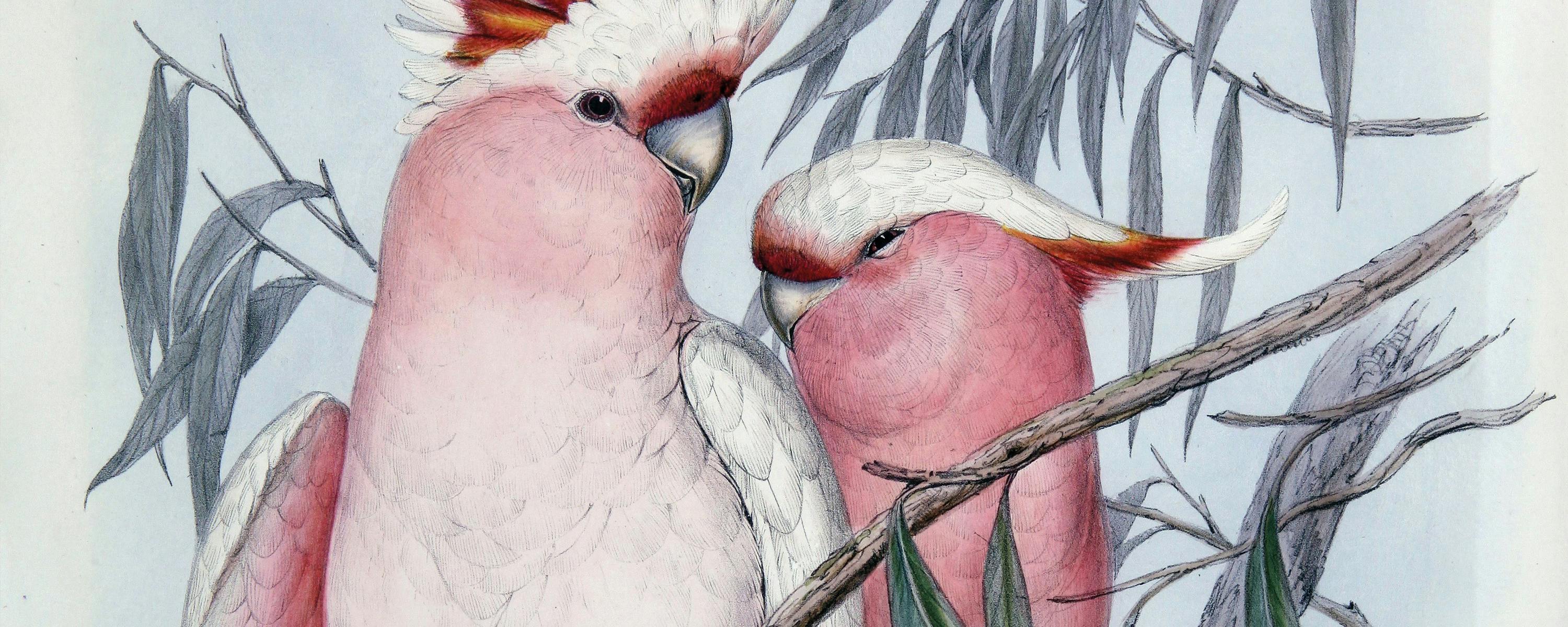in a flutter of wonder
From the Biblioteca Palatina of Florence the extraordinary collection of drawings, volumes and prints with a naturalistic theme of the Grand Dukes of Tuscany
Words Cristina Conti - Photography courtesy of Biblioteca Nazionale Centrale di Firenze
Almost one hundred thousand old volumes: scientific and naturalistic texts, Greek, Latin and Italian classics, illustrated books and incunabula. And very rare manuscripts, from Galileo’s papers to Ugo Foscolo’s writings. It is the treasure of the Biblioteca Palatina, now kept in the Biblioteca Nazionale Centrale of Florence. It is a treasure that is often revealed to the public with thematic exhibitions rich in history, but also in beauty. Like the one that, last spring, displayed the extraordinary illustrated volumes and drawings, in every format, dedicated to birds and butterflies. With the evocative title “In a flutter of wings”, scarves designed by Fulvia Ferragamo and dedicated to the same themes were also exhibited in the Dante Room of the Florentine library: a dialog between eras testifying how the charm and love for nature can be transmitted from a distant past to contemporary reality, fashion, and quality craftsmanship.
Among the books on display, there are many of the rarest and most precious pieces, authentic masterpieces of 18th and 19th century naturalistic illustration. And some of these volumes are pieces that hold incredible records, as underlined by Simona Mammana, curator of the exhibition for the Biblioteca Nazionale Centrale of Florence. “The collection includes, for example, the largest book on birds, the first book in color on birds, the first publications on butterflies from various places around the world: works that document, with images of extraordinary grace, the new ornithological and entomological species known to science in those years”.
And, at the same time, they bear witness to the great bibliophile and antiquarian passion and the multiple cultural and artistic interests of the Habsburg-Lorraines, the grand dukes of Tuscany who, starting from the mid-18th century and up to the unification of Italy, were dedicated to building the Biblioteca Palatina. “The Lorraine grand dukes brought modernity in every field, and even their book collection is characterized by modernity, as well as by the internationality and cosmopolitanism that lead them to buy from publishers all over Europe”, Mammana explains.
The names of Pietro Leopoldo, initiator of the collection with his wife Maria Luisa, and of Leopoldo II, the last of the grand dukes, stand out above all. The latter, in a regulation of 1828, made precise provisions about how the Library should develop its mission: it had to be active in the acquisition of manuscripts, incunabula, Greek, Latin and Italian classics. And it had to keep the sections dedicated to antiques, fine arts, geography, travel and Italian history “up-to-date”. And natural history: zoology but also medicine, anatomy, and research on minerals. An attention that reflects the scientific interests of Leopoldo, who also dedicated his time to the Museo di Storia Naturale which, thanks to him, expanded to reach an international level. Another, important diktat of Leopold II was to buy expensive works, which other more modest libraries, as well as private individuals, could not afford, but which the Lorraines could make available. Finally, the Library also acted as a “sponsor” in the publication of books, financing those it would then acquire.
‘Nature close to the heart because it is a friend’, writes the grand duke in his Memorie, enchanted by the beauty of large trees as by wildflowers, and by the wonders that spring brings before his eyes every day
“Today, these works also have a different significance: they testify to a biodiversity that has disappeared, because many of the species depicted unfortunately no longer exist”, Mammana adds. A loss that Leopoldo, a true lover of nature, would have been the first to suffer. ‘Nature close to the heart because it is a friend’, writes the grand duke in his Memorie, enchanted by the beauty of large trees as by wildflowers, and by the wonders that spring brings before his eyes every day.
The Library’s rare and ancient material is kept in the warehouses of the Fondo Palatino and is made available to scholars in the consultation rooms. But it is often exhibited to the public, as on the occasion of the exhibition “In a flutter of wings”, or in the previous one, “Images of the Orient” dedicated to Islamic art which featured part of Library’s extensive collection on travel. Between June and July of this year, the “Rediscovered Rome” exhibition will exhibit, for the first time, twenty-three drawings of Imperial Rome’s ancient monuments. While between October 2022 and January 2023, the five years between the end of the First World War and the rise in power of fascism will be the protagonists, of the “Dissonances: 1917-1922: Five Years that Changed Italy” exhibition.
